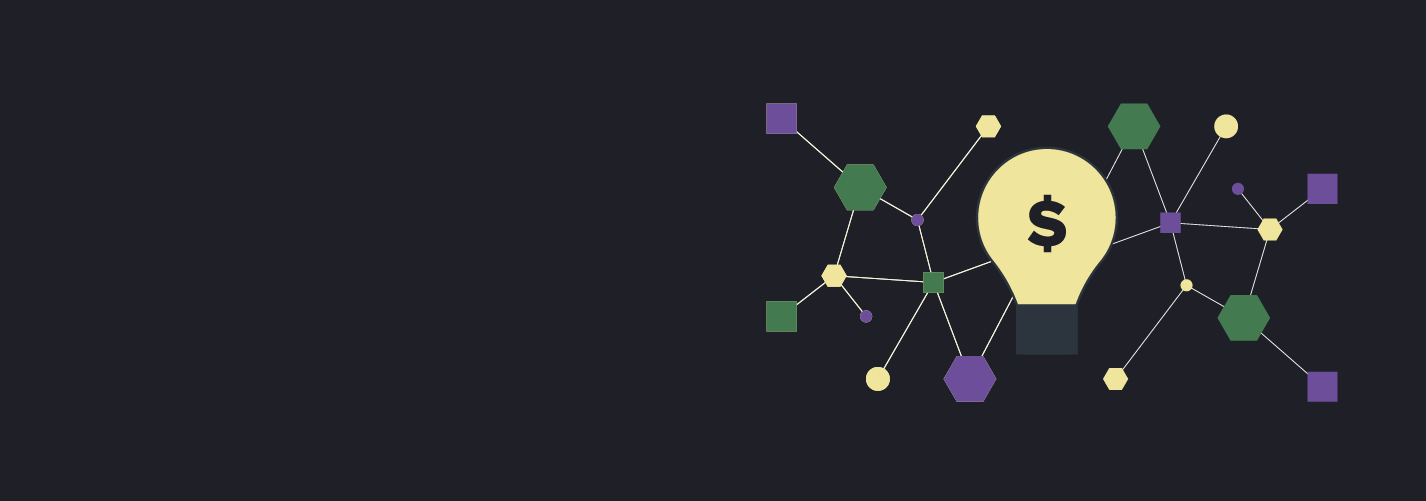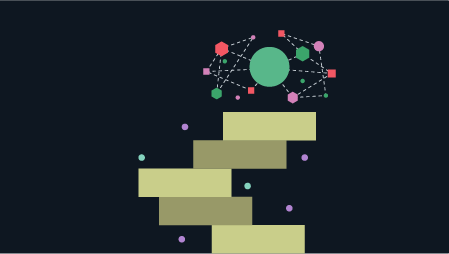IoT is a powerful economic driver. IoT Innovation is actively shaping businesses and consumer trends. Most of the technologies developed before and during the pandemic address the Internet of Things directly or indirectly. From healthcare and retail to automobile and manufacturing, IoT innovations are opening new avenues across industries.
It covers almost every segment of the web, connecting various tech products from office setups and industry platforms to smart home devices. To measure the impact of IoT, let’s take a closer look at the market statistics.
- 2021: The size of the market of IoT, including hardware, software, systems integration, and data services is expected to be $520 billion (Bain & Company)1
- 2022: $1 trillion is expected to be spent on the Internet of Things (IoT) technology worldwide (Statista)2
- 2023: The Asia Pacific is expected to be the IoT spending market share leader, with a 35% rate. North America is expected to have 27%, and EMA (Europe, Middle East, and Africa) is expected to have 25% of the spending market share after the Asia Pacific (Statista)3
- 2027: The market size of IoT is estimated to expand to over $2 trillion (Business Insider)4
SOURCE: BUSINESS INSIDER
These numbers are enough to prove that IoT can offer limitless opportunities now and in the future. Failing to stay competitive within this space can result in significant losses. To help you seize the best opportunities, here are the 10 biggest IoT innovations.
Related Reading: Top 10 IoT Trends That Can Drive Your Business Decisions In 2021
- IoT Sensors.
The IoT sensor market is set for lucrative growth and is expected to rise from USD 8.4 billion in 2021 to USD 29.6 billion by 2026.5 The reason being is that IoT sensors allow for the optimization of current consumer, industrial, and civic processes. It is paving the way for the next wave of IoT progress by adding smart to traditional devices.
The three primary reasons for their growth are – sensors continue to shrink in size, they are available at economical costs, and they consume less power. Despite this, IoT sensors continue to improve in accuracy and sensitivity, measuring a range of data such as temperature, humidity, pressure, vibration, and motion. They can also be embedded with intelligent technology, including computer vision for self-maintenance and remote diagnostic repair.
What differentiates IoT sensors from simple sensors is that it allows seamless flow of data. This means it not only gathers data from different environments but also sends it to connected devices. Businesses can use this data for predictive maintenance, enhanced efficiency, and delivering actionable insights.
- Artificial Intelligence Analytics.
Big data and AI have combined to produce an array of opportunities for advanced IoT data analytics solutions. A report from Research and Markets forecasts that AI and IoT will surpass a value of $26 billion by 2025. They also demonstrate that AI improves IoT data’s efficiency by 25%; thus improving analytics by 42% for the industry.6
Businesses are using them to determine trends and patterns by analyzing structured and unstructured data to extract meaningful insights. However, getting insights is only the first step. AI has much more potential in IoT systems, which will remain relevant for years to come.
One such example is the ‘Connected Assembly Lines’ in the manufacturing industry. It can identify and reduce the rate of manufacturing defects in the fabrication process by using AI visual inspection for quality control. Other examples include smart decision-making home devices, self-operating cars, and smart cities. AI’s role in IoT is not limited to predictive and descriptive analysis; it stretches far beyond creating business value.
- Edge Computing and IoT.
IoT benefits by having the computing power closer to where a physical device or data source exists. This helps to analyze the data produced by IoT sensors and devices at the edge rather than traveling back to the central site. Moreover, you can respond faster to issues, mitigate them, and increase operational efficiency.
One of the best applications of Edge IoT is a self-driving car and traffic cameras. This is utilized for pedestrian detection, traffic lights, vehicle prioritization, parking detection, and electronic tolling. Deploying Edge IoT with analytic algorithms and a machine learning model enables local data processing to make brisk, yet informed decisions.
Technology giants such as Microsoft, IBM, and Amazon are heavily investing in edge computing technologies. Amazon’s second-generation AWS IoT Greengrass service has already entered use, empowering developers to use Lambda functions with edge devices.
- Smart Grids.
The smart grid is another industrial application of IoT to build a secure, clean, and more efficient future. It is a part of an IoT framework used to remotely monitor and manage everything from lighting, electricity, traffic signals and congestion, parking areas, road warnings, and the early detection of power influxes.
Utility companies are using these grids to efficiently manage outages, identify load distribution, detect faults and repairs, control power infrastructure and resources, and interconnect all their assets. What makes the IoT grid smarter is two-way communication between connected devices and hardware. It can sense and respond to user demands, allowing consumers to have quality access to energy.
- Smart Healthcare Systems.
Healthcare was the most accelerated IoT vertical in 2020 due to the ongoing global pandemic. This explosion of IoT devices in the healthcare sector persists as we near the end of 2021. As a matter of fact, 70% of the best-selling wearables today belong to the health and wellness industry, and 40% of all IoT-driven devices are expected to be used there by 2026.7 The revenue in the healthcare industry is expected to increase by more than $135 billion by 2025.8
Also called the Internet of Medical Things (IoMT), the technology can help in remotely monitoring patient data and making clinical decisions. Hospitals can easily exchange and retrieve data with more transparency. Accounting systems, electronic patient recording systems, and other approaches have become more economical due to IoT in the healthcare sector.
More than 73% of organizations working in this industry have confirmed that their costs have decreased, and the quality of service has improved after IoT implementation.9 IoT in healthcare allows the provision of effective healthcare services to patients, and it saves the lives of many individuals by real-time monitoring.
Related Reading: 6 Innovations That Are Propelling Health Systems into the Future
- Intelligent Retail.
The potential of IoT in the retail industry is staggering, which can be explained by the event related to the pandemic. With the stay-at-home order and social distancing, many retailers are rethinking their business strategies and speeding up towards digitization.
IoT applications such as inventory management, personalized discounts, smart shelves, smart barcode readers, mobile payments, and automated checkout systems are redefining the retail industry manifold. Other applications improving customer experience in retail are:
Supply chain optimization – GPS and RFID technology will allow brands to track and monitor items throughout their delivery process, and predict a precise delivery time.
In-store experiences – Implementing IoT provides a new experience for fitting rooms, offers intelligent suggestions, and can even replace human workers. The most famous and successful example of large-scale IoT implementation in the retail industry is Amazon Go.
Efficient store management – IoT empowers the business operations in retail with solutions such as automated packing services, SKU (Stock Keeping Unit) accounting, and inventory monitoring drones.
Other upcoming applications include shopper mapping, analyzing mall traffic, predictive equipment maintenance, and personalized alerts resulting in better visibility and reduced fraud, improved retail management and tracking, and efficient use of in-store staff.
- Smart Farming.
Agribusiness is another area where IoT is expected to be very helpful. Particularly with global population growth, farmers and agricultural businesses are turning to IoT for analysis and better production capabilities.
As per the Business Insider intelligence projects, there are to be nearly 12 million agricultural sensors installed globally by 2023.10 Additionally, tech giant IBM estimates that the average farm can generate half a million data points per day – helping farmers to improve yields and increase profits.
Below are some of the IoT applications in AgriTech, and how they will help farmers in food demands.
- Remote monitoring of farm conditions with sensors and drones, saving time and labor on routine checks.
- Making improved decisions regarding production with real-time insights and data analytics; thus, minimizing costs and preserving resources.
- A smart greenhouse creates a self-regulating microclimate conducive for crop spraying, irrigation, lighting, temperature, humidity, and more.
- IoT in Banking.
IoT provides a dynamic changing environment, especially with cryptocurrency climbing the digital money ladder in an unprecedented manner. Financial institutes are relying on IoT applications to help them with software and algorithms, along with taking this process ahead. It helps them streamline the business operations and reach better security levels.
IoT is no longer limited to personalized banking and data security. A new concept by the US financials called Bank of Things (BoT) facilitates the exchange of data between individuals and legal customers within a single network based on the existing connected devices.
The major benefits of BoT are contactless payments, reduced transactions, and the ability to monitor the budget in real mode. Although BoT-oriented models are still a work in progress due to serious vulnerability flaws, it is expected to be in high demand in the coming years.
- Smart Cities.
Similar to how a smartphone brings the entire world to our fingertips, an IoT-incorporated smart city brings state-of-the-art technologies to the entire city, upgrading the quality of life. It makes the city more connected, efficient, manageable, and cost-effective. Residents can make better use of precious resources, combat crimes more effectively, and enable a cleaner and sustainable environment, all leading to a healthier lifestyle.
According to a research report, the global IoT in smart cities market size is expected to grow from USD 113.1 billion in 2020 to USD 260.0 billion by 2025. This means that the Compound Annual Growth Rate (CAGR) during the forecast period is 18.1%
- Automotive.
From connected cars to automated transport systems, the Internet of Things (IoT) applications have opened new avenues for the global automotive market. It has enabled greater transportation efficiency and management capabilities. Also catalyzed growth through faster data transfers, response times, and enhanced vehicular communication.
According to Netscribes market research, the global automotive IoT market is expected to reach USD 106.32 billion by 2023, driven by the ever-increasing need for saving time and maximizing productivity in this fast-paced world.12
Telematics and Vehicle-to-Vehicle (V2V) communication is another important scope for IoT in the automotive industry. This enables features like over-the-air updates, maintaining a safer distance, and exchanging other important data.
There is no future for IoT!
Because the future is now.
Advancements in the Internet of Things technology are propelling us farther than ever thought before. Many industry leaders today see implementing IoT as an asset rather than a challenge.
Although the COVID-19 pandemic might slow down the progress in the short term, investing in growing technologies will help industries remain competitive in the long term. Success in the coming years will largely depend upon how companies leverage innovative technologies, and IoT will be the foremost.





